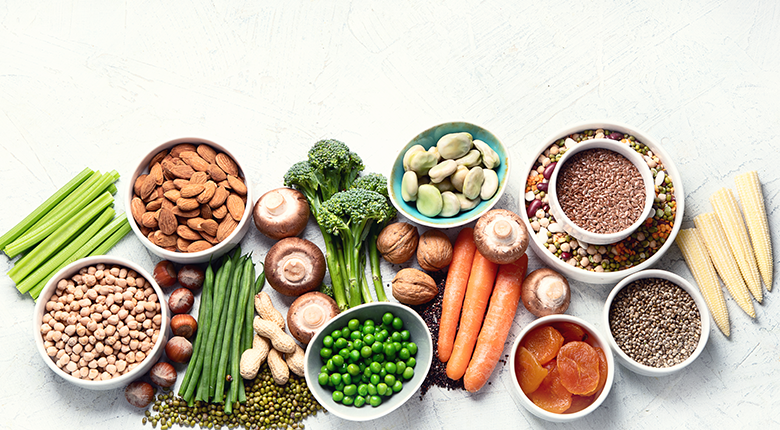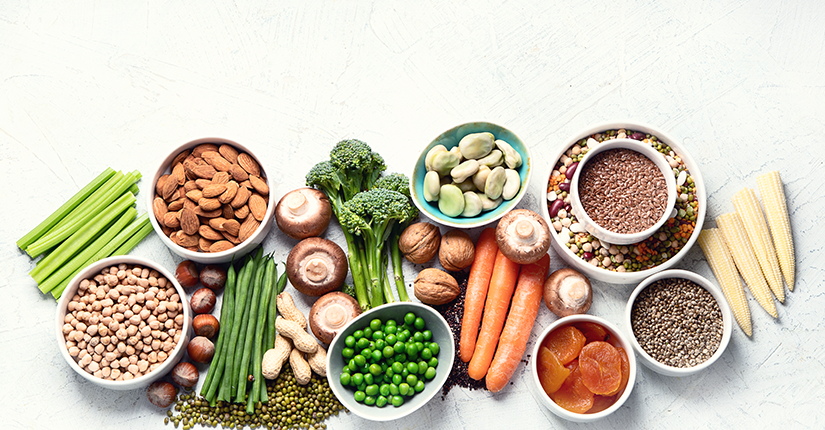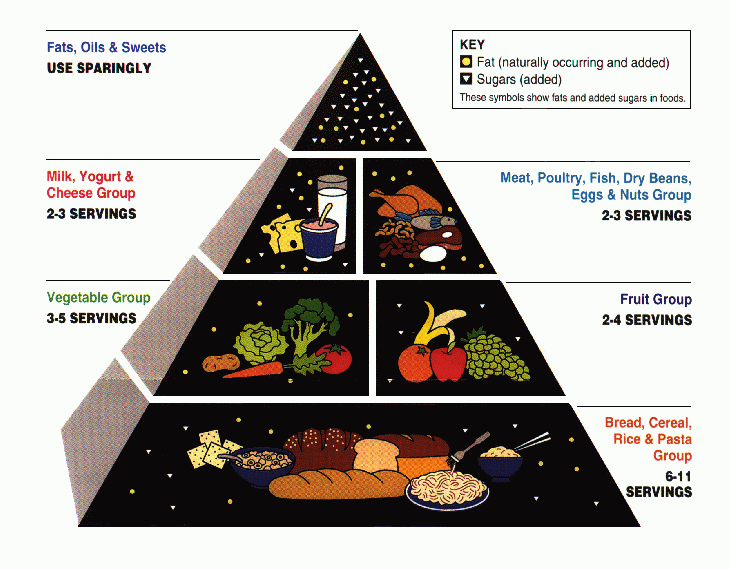
Is Fake Meat Healthier Than the Real Thing?
Is fake meat healthier than the real thing? This question has become increasingly relevant as plant-based meat alternatives gain popularity. While the allure of a healthier, more sustainable option is undeniable, the debate about their nutritional value, processing methods, and overall impact on our health remains.
This exploration dives deep into the world of fake meat, comparing its pros and cons to traditional meat, and ultimately helping you make informed choices about your diet.
From examining the nutritional profiles of both real and fake meat to exploring their environmental footprints, we’ll uncover the key factors influencing this ongoing discussion. We’ll also address common concerns regarding processing methods, potential allergens, and the long-term health implications of choosing one type of meat over the other.
Nutritional Comparison
The nutritional content of real meat and fake meat can vary significantly, impacting their potential health benefits and drawbacks. This section explores the nutritional profiles of both types of meat, focusing on key nutrients like protein, fat, fiber, vitamins, and minerals.
Comparison of Nutritional Content
To understand the differences, let’s compare the nutritional content of various types of real meat with popular plant-based meat alternatives.
Nutritional Content of Real Meat
Real meat, including beef, chicken, and pork, is a good source of protein, iron, and zinc. However, it can also be high in saturated fat and cholesterol.
Nutritional Content of Plant-Based Meat Alternatives
Plant-based meat alternatives, such as Beyond Meat and Impossible Foods, are often made from soy, pea protein, and other plant-based ingredients. They can be a good source of protein and fiber, but they may lack some of the nutrients found in real meat, like iron and zinc.
| Nutrient | Beef (3 oz) | Chicken (3 oz) | Pork (3 oz) | Beyond Meat Burger (1/2 patty) | Impossible Burger (1/4 patty) |
|---|---|---|---|---|---|
| Protein (g) | 22 | 21 | 20 | 15 | 10 |
| Fat (g) | 18 | 10 | 14 | 13 | 10 |
| Fiber (g) | 0 | 0 | 0 | 3 | 2 |
| Iron (mg) | 3 | 1 | 2 | 3 | 2 |
| Zinc (mg) | 5 | 2 | 3 | 2 | 1 |
Potential Health Benefits and Drawbacks
Real Meat
Benefits
- High in protein: Protein is essential for building and repairing tissues, and real meat is a good source of this nutrient.
- Provides essential vitamins and minerals: Real meat contains important vitamins and minerals, such as iron, zinc, and vitamin B12.
Drawbacks
- High in saturated fat and cholesterol: Excessive intake of saturated fat and cholesterol can increase the risk of heart disease.
- Potential for foodborne illnesses: Real meat can be a source of foodborne illnesses if not handled properly.
Plant-Based Meat Alternatives
Benefits
- Lower in saturated fat and cholesterol: Plant-based meat alternatives are typically lower in saturated fat and cholesterol than real meat.
- Good source of fiber: Fiber is important for digestive health, and plant-based meat alternatives can be a good source of this nutrient.
Drawbacks
- May be processed: Some plant-based meat alternatives are highly processed, which may raise concerns about their long-term health effects.
- May contain added ingredients: Plant-based meat alternatives may contain added ingredients, such as salt, sugar, and preservatives, which may not be healthy in large amounts.
Processing and Ingredients: Is Fake Meat Healthier Than The Real Thing
The processing methods and ingredients used in both real meat and fake meat can significantly impact their nutritional content and potential health implications. Understanding these aspects is crucial for making informed dietary choices.
Real Meat Processing
Real meat undergoes various processing methods, including:* Slaughtering and Butchering:This involves the humane slaughter of animals followed by the removal of organs and skin.
Curing and Smoking These processes use salt, nitrates, and smoke to preserve and enhance the flavor of meat.
Marinating This involves soaking meat in a mixture of ingredients like soy sauce, vinegar, and spices to tenderize and add flavor.
Cooking Various cooking methods, such as grilling, frying, and roasting, are used to prepare meat for consumption.
Fake Meat Processing, Is fake meat healthier than the real thing
Fake meat products, also known as plant-based meat alternatives, are typically processed using:* Extrusion:This process involves forcing a mixture of plant-based ingredients through a die to create a textured product resembling meat.
Tempering This involves adjusting the temperature of the mixture to create the desired texture and consistency.
Flavoring Flavorings, such as spices, herbs, and natural or artificial meat extracts, are added to enhance the taste.
Key Ingredients in Fake Meat
The key ingredients in fake meat products vary depending on the brand and type of product. Some common ingredients include:* Soy Protein:This is a common base ingredient, providing protein and texture.
Wheat Gluten This ingredient adds a chewy texture and can help mimic the texture of meat.
The debate about whether fake meat is healthier than the real thing is a complex one, with factors like processing methods and nutritional content coming into play. But it got me thinking, are we seeing a similar shift in our food choices with things like chickpeas becoming the new cauliflower?
Are chickpeas the new cauliflower ? Just like plant-based meat alternatives, chickpeas are versatile, nutritious, and can be used in a variety of dishes. So, whether it’s fake meat or innovative uses for chickpeas, it seems like we’re embracing new and exciting ways to eat.
Coconut Oil or Palm Oil These oils are often used to add moisture and richness.
Flavorings and Seasonings
The debate about whether fake meat is healthier than real meat is a complex one, with arguments on both sides. It can be overwhelming to sift through all the information and make a decision. But just like figuring out how to stay sane while working from home, it’s all about finding what works best for you.
For tips on maintaining your sanity during a work-from-home lifestyle, check out this helpful article: 10 ways to stay sane when working from home. Ultimately, the choice of whether to eat fake or real meat comes down to your individual dietary needs and preferences.
Potential Allergens and Concerns
Fake meat products can contain potential allergens, including:* Soy:Some people have soy allergies.
Wheat Gluten sensitivity or celiac disease can be triggered by wheat gluten.
Nuts Some fake meat products may contain nuts or nut extracts.
Dairy Some products may contain dairy ingredients, such as casein or whey protein.
The debate about whether fake meat is healthier than the real thing is complex, and there’s no simple answer. Ultimately, it depends on the specific product and your individual dietary needs. However, regardless of your stance on fake meat, increasing your vegetable intake is always a good idea.
Check out these 5 ways to up your vegetable game for some inspiration! After all, incorporating more veggies into your diet can provide essential nutrients and contribute to a healthier lifestyle, regardless of whether you’re a fan of plant-based alternatives or not.
Health Implications of Processing and Ingredients
The processing methods and ingredients used in fake meat production can have potential health implications.* Sodium Content:Some fake meat products can be high in sodium, which can contribute to high blood pressure.
Processed Ingredients The use of processed ingredients, such as wheat gluten and soy protein, can raise concerns about potential health risks.
Added Sugars Some fake meat products may contain added sugars to enhance flavor.
Trans Fats Some products may contain trans fats, which are associated with an increased risk of heart disease.It is essential to carefully read the labels of fake meat products to understand their ingredients and nutritional content. Choosing products with minimal processing and fewer added ingredients is generally recommended.
Environmental Impact
The environmental impact of meat production is a significant concern, particularly in the context of climate change and resource depletion. Both real and fake meat production have environmental implications, with varying degrees of impact. Understanding these differences is crucial for making informed dietary choices and promoting sustainable food systems.
Greenhouse Gas Emissions
Greenhouse gas emissions are a major contributor to climate change, and livestock production is a significant source of these emissions.
- Livestock, particularly cattle, produce large amounts of methane, a potent greenhouse gas, through their digestive processes.
- The production of real meat also involves deforestation for grazing land, which releases carbon dioxide stored in trees.
- Fake meat production, on the other hand, typically involves lower greenhouse gas emissions.
- The production of plant-based meat alternatives often uses less energy and water, resulting in a lower carbon footprint.
- However, the production of some fake meat products, particularly those containing ingredients like soy or palm oil, can contribute to deforestation and other environmental issues.
A study published in the journal Science found that the production of beef generates significantly higher greenhouse gas emissions compared to plant-based meat alternatives. The study estimated that producing one kilogram of beef generates around 60 kilograms of carbon dioxide equivalent, while producing one kilogram of plant-based meat alternatives generates around 15 kilograms of carbon dioxide equivalent.
Water Usage
Water usage is another crucial environmental factor to consider.
- Real meat production requires vast amounts of water for livestock feed production and animal drinking.
- The production of one kilogram of beef can require up to 15,000 liters of water.
- Fake meat production generally requires less water than real meat production.
- Plant-based meat alternatives are often made from crops like soy and peas, which have lower water footprints compared to animal products.
The Water Footprint Network estimates that the water footprint of beef is significantly higher than that of plant-based alternatives. For example, the water footprint of one kilogram of beef is estimated to be around 15,000 liters, while the water footprint of one kilogram of soy-based meat alternatives is estimated to be around 3,000 liters.
Land Use
Land use is another important environmental factor.
- Real meat production requires extensive land for grazing and feed production.
- This land use can lead to deforestation, habitat loss, and biodiversity decline.
- Fake meat production typically requires less land than real meat production.
- Plant-based meat alternatives are often made from crops that can be grown on smaller areas of land.
A study published in the journal Nature found that the production of real meat requires significantly more land than the production of plant-based meat alternatives. The study estimated that producing one kilogram of beef requires around 16 square meters of land, while producing one kilogram of plant-based meat alternatives requires around 2 square meters of land.
Health Risks and Concerns

Both real and fake meat have their own set of potential health risks and benefits. Understanding these aspects can help you make informed choices about your diet.
Health Risks Associated with Real Meat
Consuming real meat, while providing essential nutrients, can also pose certain health risks.
- Saturated Fat and Cholesterol:Red meat, particularly processed varieties, is high in saturated fat and cholesterol. High intake of these can contribute to heart disease, stroke, and other cardiovascular issues.
- Foodborne Illnesses:Real meat can be a source of foodborne illnesses caused by bacteria like Salmonella, E. coli, and Listeria. Proper handling, storage, and cooking are crucial to prevent these illnesses.
Health Risks Associated with Fake Meat
While often promoted as healthier alternatives, fake meat products also have their own set of potential risks.
- Additives:Many fake meat products contain additives, such as preservatives, flavor enhancers, and colorings. While these are generally safe in moderate amounts, some individuals may have sensitivities or allergies to certain additives.
- Processing Methods:The processing methods used to create fake meat can involve high temperatures, pressure, and chemicals. Some people may be concerned about the potential impact of these processes on the final product’s nutritional value and safety.
- Allergic Reactions:Fake meat products often contain soy, wheat, or other common allergens. Individuals with allergies should carefully check ingredient lists and avoid products containing ingredients they are allergic to.
Potential Health Benefits and Drawbacks of Real and Fake Meat
- Heart Health:Lean meats, like poultry and fish, can be part of a heart-healthy diet. However, red meat, especially processed varieties, can increase the risk of heart disease. Fake meat products, particularly those made from plant-based proteins, may be lower in saturated fat and cholesterol, potentially benefiting heart health.
- Cancer Risk:Some studies suggest a link between red meat consumption and increased cancer risk. However, the evidence is not conclusive, and more research is needed. Fake meat products, due to their lower fat content and potential lack of certain carcinogens found in red meat, may be associated with a reduced risk of certain cancers.
Consumer Preferences and Perceptions
The decision to choose fake meat over real meat is driven by a complex interplay of factors, including personal values, health considerations, and environmental concerns. Consumers’ perceptions of fake meat are shaped by various factors, such as taste, texture, price, and ethical considerations.
Factors Influencing Consumer Perceptions
Consumers’ perceptions of fake meat are influenced by a variety of factors.
- Taste and Texture:The taste and texture of fake meat are crucial factors influencing consumer acceptance. While some consumers find fake meat to be a satisfying alternative, others may find the taste and texture to be unappealing or artificial.
- Price:The price of fake meat can be a barrier for some consumers, especially those on a tight budget. While the price of fake meat has been decreasing in recent years, it is often still more expensive than real meat.
- Ethical Concerns:Ethical concerns, such as animal welfare and environmental impact, are driving forces behind the growing popularity of fake meat. Consumers who are concerned about the treatment of animals in factory farms or the environmental impact of animal agriculture are more likely to choose fake meat alternatives.
- Health Considerations:Some consumers choose fake meat because they perceive it to be healthier than real meat. While fake meat can be lower in saturated fat and cholesterol, it’s important to note that some brands may be high in sodium or processed ingredients.
Cultural and Demographic Variations
Consumer preferences for fake meat vary across cultures and demographics.
- Vegan and Vegetarian Consumers:Vegan and vegetarian consumers are more likely to embrace fake meat as a substitute for real meat, as it allows them to adhere to their dietary restrictions.
- Health-Conscious Consumers:Health-conscious consumers may choose fake meat as a way to reduce their intake of saturated fat, cholesterol, and other potentially harmful ingredients.
- Environmentalists:Consumers concerned about the environmental impact of animal agriculture are increasingly turning to fake meat as a more sustainable option.
Closure
The choice between real and fake meat ultimately boils down to individual preferences, dietary needs, and ethical considerations. While fake meat offers a compelling alternative for those seeking a healthier, more sustainable option, it’s important to be aware of its potential downsides.
Real meat, on the other hand, provides a familiar source of protein and nutrients, but comes with its own set of health and environmental concerns. By understanding the complexities of this debate, we can make informed decisions about our dietary choices and contribute to a more sustainable future.






